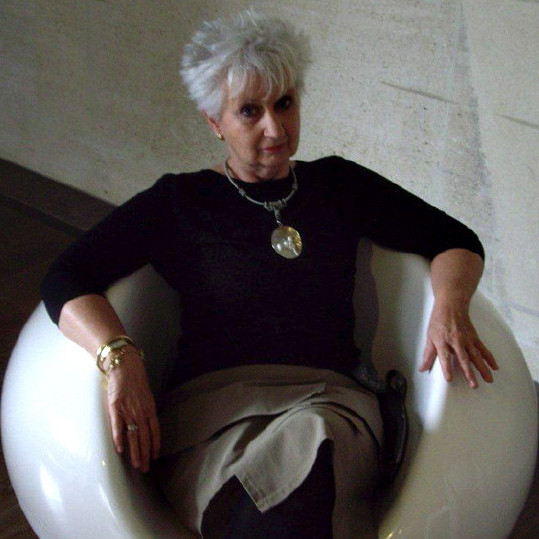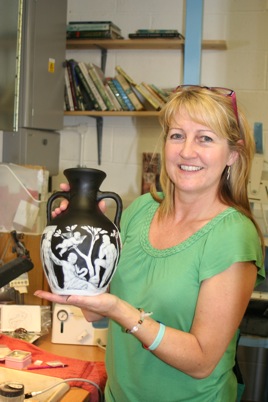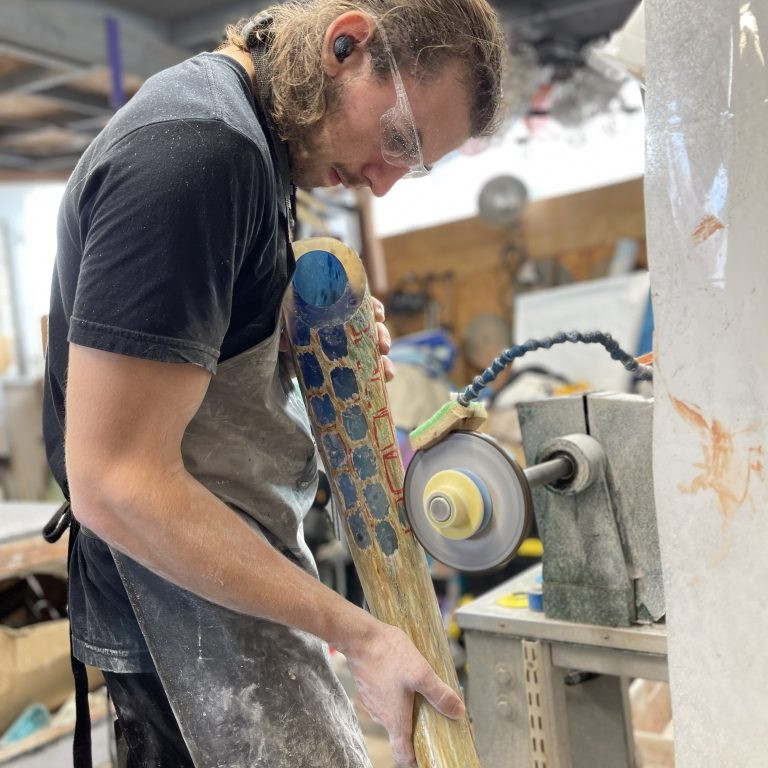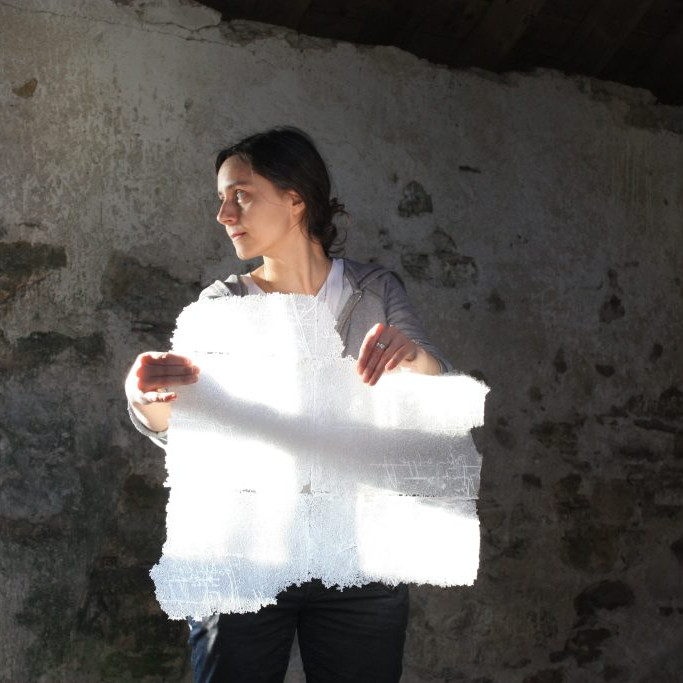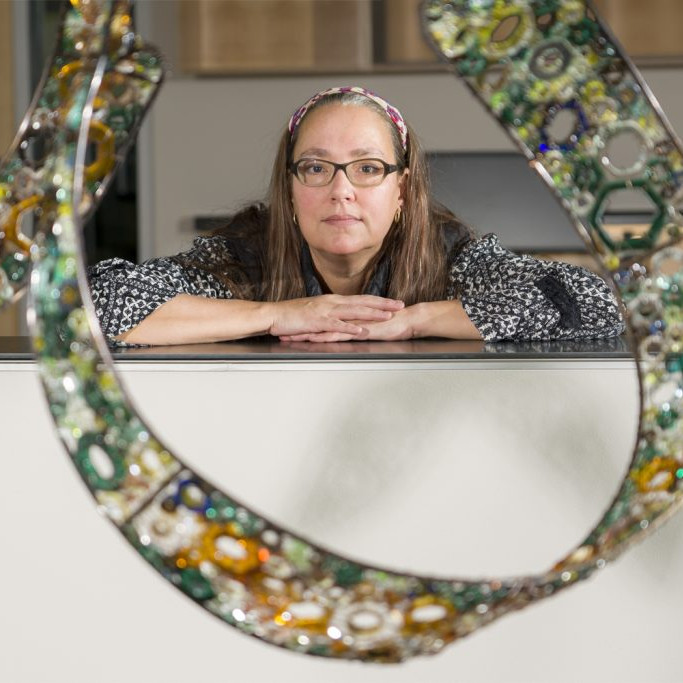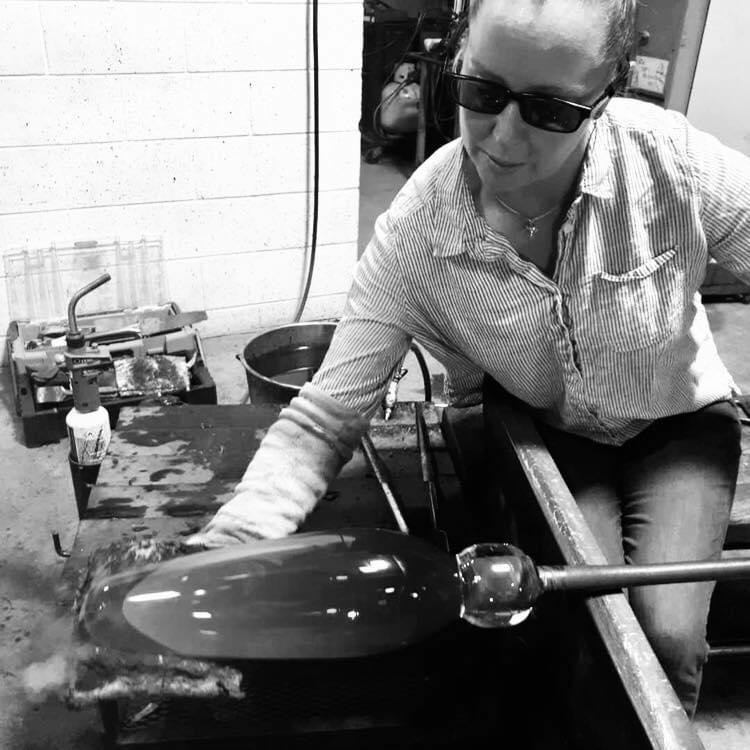Terri Colledge Glass Artist - Amblecote, UK
Can you explain what cameo glass is?
Cameo glass is layers of different coloured glass that are made into a vase or a perfume bottle, etc. If the co-efficiency between the layers is not right the blank could crack when the glass starts to cool down.
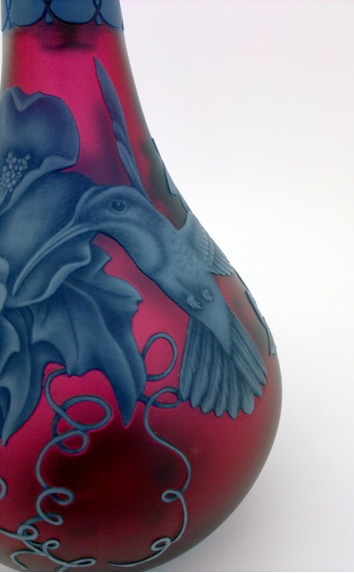
Can you briefly explain the process of cameo glass?
The process of cameo glass is: firstly I draw a design on a resist (a sticky backed plastic). It is all hand drawn. The image is cut out and adhered to the glass. The blank is then sandblasted so that the top layer of coloured glass is worn away by the grit. I use a flexi drive drill to engrave the details. The deeper I go down the more of the colour beneath shows through.
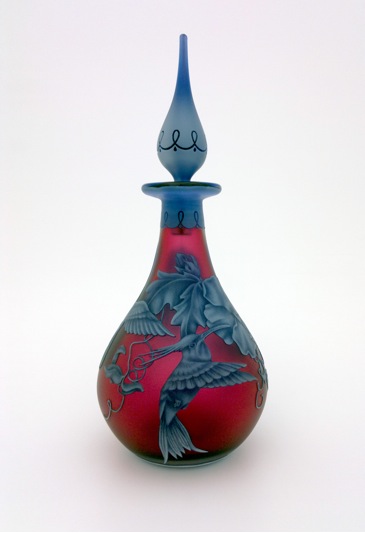
How many layers of glass are usually fused? Is there a limit?
I usually use three layers of glass. I have used four but it does depend on the expertise of the glass maker.
Who produces your blanks for you? Is this seen as a partnership?
Richard Golding (of Station Glass, Leicester) makes my blanks. Richard was actually the first person who got me involved with cameo glass and he was my mentor.
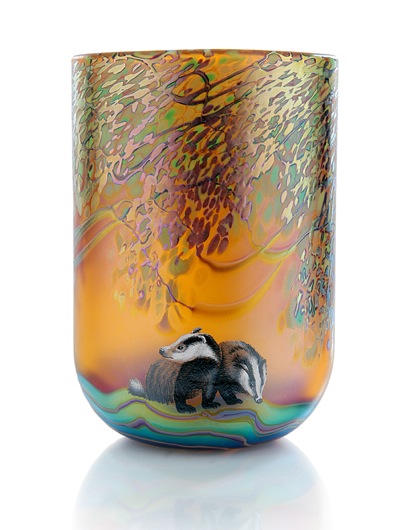
Can you tell us about a very old and special piece of cameo glass, The Portland Vase, and your involvement?
No records exist of how the Roman Portland Vase was made but it is known that approx. 14 Roman Cameo pieces still exists worldwide. The Original Portland Vase is now displayed in the British Museum, London, along with another Roman Cameo item of the same period – the Aldjo Jug. The first glass Portland Vase Replica was made here in Stourbridge 1865, the engraver John Northwood took three years to engrave it. The method he used is different to the one I used for the 2012 Portland Vase, whereas he used bitchumen as a resist and then used hydrochloric acid to erode the white layer away.
The 2012 Portland Vase was a fantastic project to be involved with. A team of twelve experts contributed with their experience and expertise. I was the one who engraved the Portland Vase. As well as the Portland Vase we recreated the Amphora shape Portland Vase, the Aldjo Jug, and the Disc.
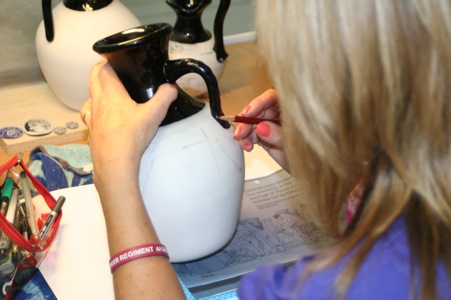
How important is it to be able to reproduce historical pieces like The Portland Vase?
What we wanted to demonstrate is the fact that the skills are still in the Stourbridge area and we were fortunate to have the craftsmen and craftswomen to work on such an important historical piece as this. That was the pinnacle of my career so far.
Can you discuss the importance of documenting your work on The Portland Vase?
From the very beginning we were fortunate to enlist the services of biographer Graham Fisher MBE who documented every stage of the creative process. Also, we were fortunate to have the making stage of the 2012 Portland Vase recorded on video.
You originally trained as a ceramic artist. Has this helped you with your new art form?
It is just that I have always been interested in drawing and painting. I think my interest in pencil drawing has helped me with cameo engraving.
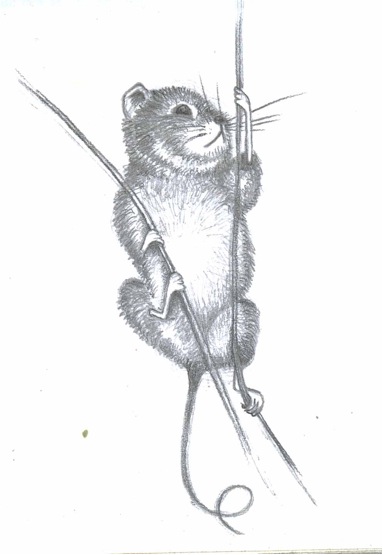
‘Field Mouse’
What lead you to be interested in cameo glass?
I joined Okra Glass Studios, Stourbridge (which was Richard Golding’s company) in 2001. Richard was very interested in cameo glass and made blanks. He asked me to try the engraving. I visited Broadfield House Glass Museum (http://www.dudley.gov.uk/see-and-do/museums/glass-museum/) to see the Cameo Room. It was an eye opener for me; I was fascinated by the cameo pieces, and inspired by them.
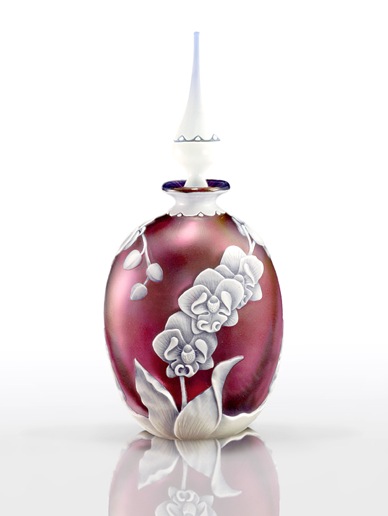
How did you teach yourself this method?
Richard gave me 15 minute tutorial. It seemed to be similar to pencil drawing and that is how I embraced the process.
How important is it to you to make sure your knowledge is carried on and how are you doing this?
It is important that it is carried on but we live a fast pace of life and the work I do is very time consuming. People want quick results and find it hard to devote so much time to one project.
How did you become an associate fellow of the guild of Engraving?
I joined the guild as a craft member. It was after an exhibition that I became an Associate Fellow.

Can you discuss your perfume bottle with the fuchsia design?
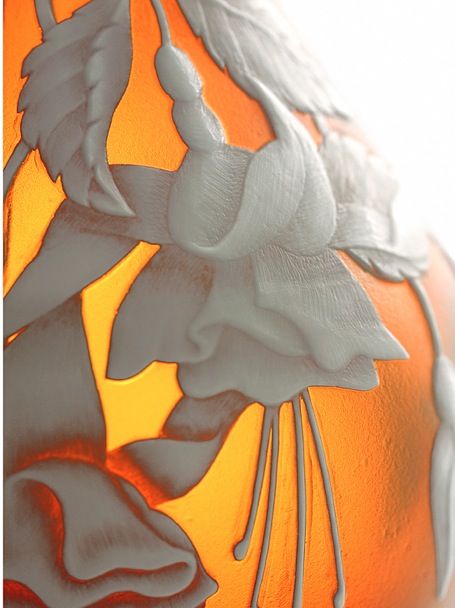
I have always had an interest in nature and colours and the shapes of the flowers. I spend a lot of time deciding on what image would suit the shape best. Different colours work well with different subjects. However, I am never sure how the underlying colours would look until I have sandblasted the piece. Sometimes I do pencil drawings of the images but as I am working on the piece it comes alive and it seems to evolve.
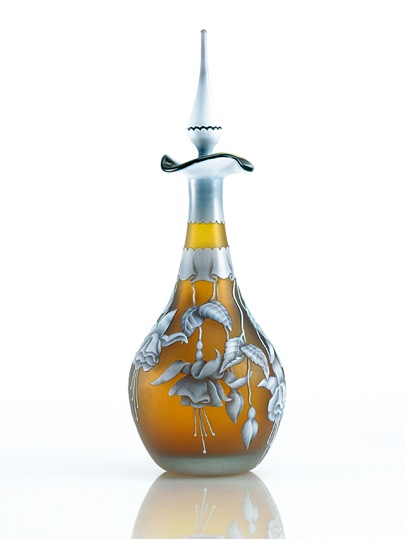
You also produce work in egg shapes. Can you discuss your ‘Grasshopper’ glass?
That was a paper weight that was commissioned. I really enjoyed engraving the Grasshoppers. I did a pencil drawing first, and I saw the detail of the grasshopper which triggered my inspiration.
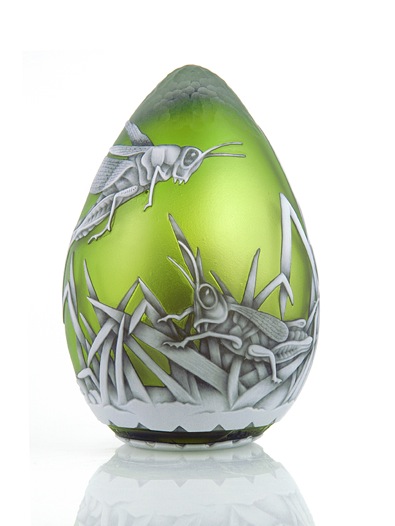
Your designs come from nature, both plant and natural. Is this due to the historical background you have brought to your work?
I was initially inspired by George Woodall (http://www.glassassociation.co.uk/sites/default/files/WEBSITE%20CAMEO%20-.pdf) whose work was so beautifully detailed. However, maybe I have a contemporary angle that I bring to my pieces.
Do you find doing jewellery gives you great satisfaction due to the fact that is smaller and therefore more affordable and within the reach of many?
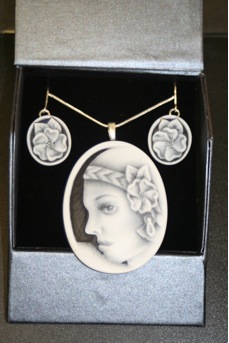
Yes it does! I love doing the jewellery it is a very rewarding process.
Unlike my other work the amount of time I spend working on a piece of jewellery is less (e.g. it might take only two days to finish a piece).
The jewellery pieces I make are accessible to more people and are, hopefully, a portable talking piece.
Are all of your pieces one off?
All my pieces are unique and that is part of what I enjoy about cameo glass. Even if I do a repeat design there is always something that would be individual about it because all my work is hand drawn. Most of my pieces are commissions.
Where have some of your commissions gone to?
Canada, Australia, Belgium, as far as I know.
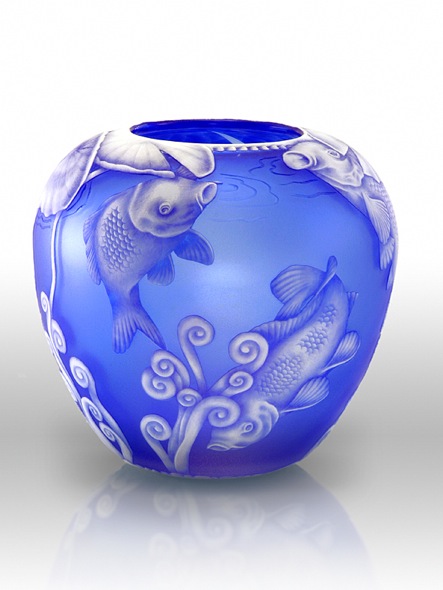
Can you explain how your work is signed and dated?
At first I used to sign them on the bottom with a flexi drill. Now I changed my style and drill my initials into the glass (on the side) because in this way it cannot be removed. Each piece comes with a signed certificate of authenticity.
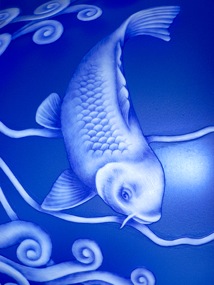
Contact details.
Website:http://www.terricolledgeglass.com/
Email:Terri_lc@yahoo.co.uk
Mobile Phone:+44 774 8881818
Terri Colledge, Amblecote, UK
Interview by Deborah Blakeley, March 2014
Think a colleague or friend could benefit from this interview?
Knowledge is one of the biggest assets in any business. So why not forward this on to your friends and colleagues so they too can start taking advantage of the insightful information the artist has given?
Other artists you may be interested in:

